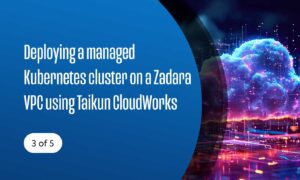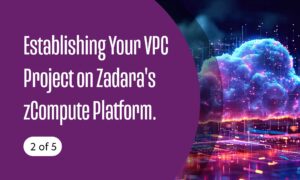Zadara delivers a unique patented approach to StaaS with single tenancy experience in a multi-tenant deployment.
Many cloud providers may make impressively grand claims when it comes to performance delivery, such as for example storage IOPS (Input/Output Operations Per Second). And as such may even apply simple equations of cost divided by IOPS to give you an impressive $/IOPS. But given the nature of multi-tenancy with cloud infrastructure, are you sure your cloud provider is consistently delivering performance at these claimed levels?
A decade after first delivering Zadara’s unique Storage-as-a-Service (StaaS) solution, our approach is still outpacing the competition. One primary reason stands out, the patented multi-tenancy efficiency with, and this is the really good bit, a ‘single tenancy’ experience. Ten years in, it’s all too easy to forget just how this purpose-built design is benefiting MSPs and Enterprises. So let me explain it in a bit more detail.
As with any shared resource, from a family vying for access to a bathroom first thing in the morning to commuter traffic on the roads, contention for shared space is everywhere. We learn to garner patience and develop strategies at a social level, but where contention is more challenging to accept is when it is affecting IT and ultimately the running of our businesses. When multiple users or applications compete for the same IT resources, such as computing power, network bandwidth, or storage capacity, your business performance suffers.
IT administrators have learned to adopt various strategies to address these challenges. For example, they might allocate more resources to handle the increased workload, use caching mechanisms to optimize read operations or prioritize certain operations to ensure critical tasks are handled promptly. But in reality, although these may help they can add unnecessary costs, create an overhead on administrators’ time and don’t really ultimately address the root problem. The goal is to balance and distribute the available resources effectively to minimize contention and ensure a smooth user experience.
When utilizing the cloud for StaaS though, the control for contention shifts out of the hands of IT administrators, and into the hands of the Cloud Providers. It is therefore important to make sure that your Cloud Provider is capable of delivering resource isolation. You should have the option of running your applications on your own resources with guaranteed IOPS and in doing so completely eliminate the noisy neighbor problem and ensure you consistently meet SLAs (Service Level Agreements) and avoid any potential resultant penalties.
Zadara’s Unique Approach to STaaS
Zadara takes a different approach to StaaS, one that we’ve actually patented and have been continuously delivering and developing for over a decade, it is a single-tenant experience in a multi-tenant deployment. Let’s take a closer look at this unique approach.
Within Zadara’s StaaS environment, multi-tenancy incorporates a proprietary architecture that allows for the segregation of CPU, RAM, Networking, and Physical Disks into distinct VPSAs (Virtual Private Storage Arrays). Each tenant has the flexibility to utilize one or multiple VPSAs. Tenants can register through the provisioning portal provided, enabling self-management. Alternatively, the service provider partner can handle these tasks on behalf of the tenants reducing complexity and administrative overheads.

A tenant utilizing multiple VPSAs is still able to avoid contention of resources because resources are assigned to each individual VPSA, therefore running multiple different workloads, such as database and backup applications which can be provisioned without the noisy neighbor impact of competing systems.
Zadara also provides the ability to provision Quality-Of-Service (QOS) on a per-volume basis within a VPSA, therefore, enabling resources to be given priority where the tenant deems necessary.
So if you are looking to ensure you avoid contention issues from noisy neighbors, want to consistently meet business performance SLAs and in doing so avoid potentially costly penalties I would recommend clicking on the button below to set up a time to discuss your needs and business goals with Zadara to learn more about our unique approach to Single-Tenant experience in a Multi-Tenant StaaS offering.






